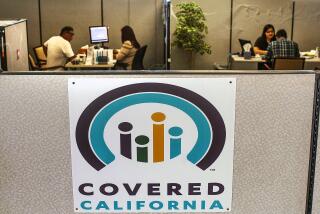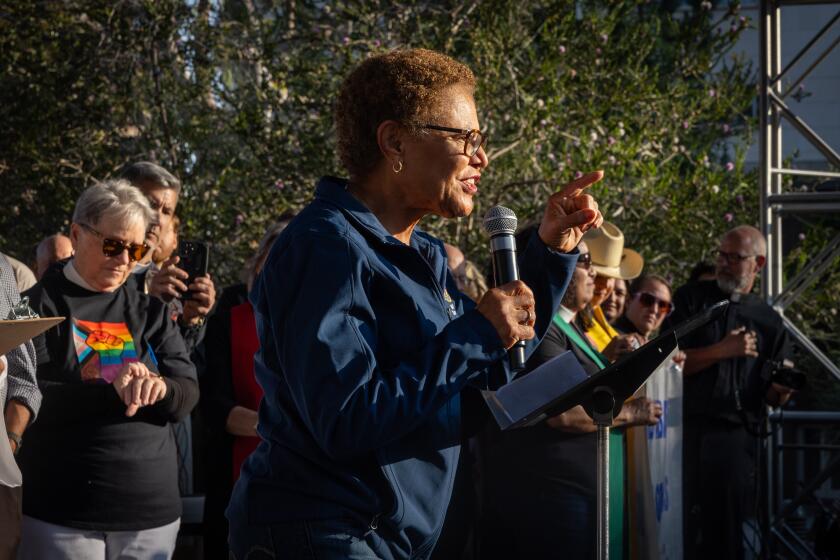California leads nation in escalation of college costs
- Share via
Steep funding cuts to higher education in California and elsewhere were significant factors in pushing average tuition and fees up 8.3% at four-year public colleges and universities nationwide this fall, according to a report by the nonprofit College Board.
California’s public universities enacted the highest average tuition increase, 21%, of any state, the annual study on college costs found. The state enrolls a tenth of the nation’s public four-year college students.
But even excluding California, tuition prices at such colleges rose significantly nationwide this year, an average of 7%, the College Board found. Apart from California, Arizona and Washington had the highest rates of tuition increases at public four-year campuses, 17% and 16% respectively, while Connecticut and South Carolina were lowest, at 2.5% each.
Sandy Baum, a policy analyst for the College Board, said the recession’s toll on tax revenues prompted some states to slash higher education funding. “California seems to be the leader of that” trend, she said.
Yet the study also showed that significant increases in federal grants and tax credits are shielding many students from some of the tuition pain even as unemployment is driving more people to enroll at colleges. “As the states have stepped back, the federal government to some extent compensated for the higher prices,” Baum said.
Nationally, in-state tuition and fees at public four-year colleges and universities average $8,244 for this school year. With room and board, the average cost of such schools is $17,131, up 6% from last year, said the report, which is being released Wednesday.
Even with steep hikes, the Cal State system’s tuition and fees total $6,521, still below the $7,186 national average for similar master’s degree campuses. UC’s tuition and fees figure, about $13,200 this year, is well above the national average of $9,185 for doctorate-granting institutions, although UC leaders say it is on par with other top public colleges.
At California’s community colleges, this year’s 37% tuition jump was the steepest percentage increase in the nation, but actual tuition and fees remain the lowest — $1,119 compared to an average of $3,288 for two-year colleges in the rest of the country.
Meanwhile, the nation’s private nonprofit four-year colleges raised tuition and fees 4.5% this year, to a national average of $28,500. With room and board, the price tag averaged $38,589, up 4.4% from last year.
Critics of college pricing have long complained that tuition rises much faster than inflation, which was 3.6% for the year ending in July, and that schools should try harder to rein in costs. In the last decade, the percentage growth has moderated somewhat at private schools, averaging 2.6% above inflation annually, but has risen faster than in recent decades at public four-year schools, to 5.6% annually above inflation.
Patrick Callan, president of the Higher Education Policy Institute, a San Jose-based think tank, said universities still resist efficiencies, especially in adopting new technology and persuading research faculty to teach more classes. “There is a real lack of serious attention to productivity and innovation,” he said.
Baum and other experts noted that the actual cost for students often is much lower than a college’s sticker price. Grants and federal tax benefits averaged $5,750 for students at public four-year colleges and $15,530 for those at private nonprofit schools, according to a financial aid study also released by the College Board.
But even as the number and size of federal Pell Grants for financially needy families increase and more people are eligible for tuition tax credits, the report said, complex aid policies “make it difficult for many of those who most need the help to understand and navigate the system.”
The study showed increased reliance on loans, especially those backed by the federal government. About 56% of students who earned bachelor’s degrees at public colleges in 2009-10 graduated with debt, with an average burden of $22,000. At private nonprofit schools, 65% of graduates had loans, with an average debt load of $28,100.
More to Read
Sign up for Essential California
The most important California stories and recommendations in your inbox every morning.
You may occasionally receive promotional content from the Los Angeles Times.














